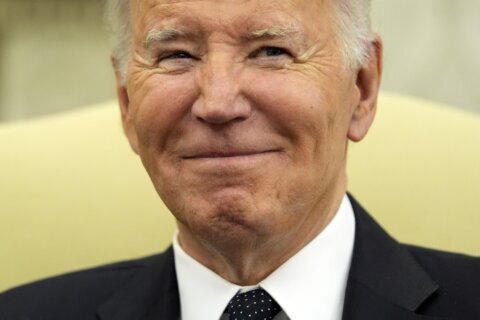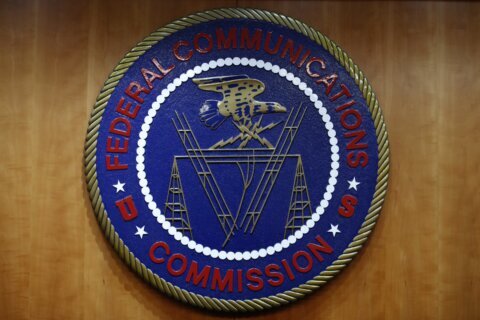Retailers just got one more reason to worry about the upcoming holiday shopping season.
What’s happening: US retail sales increased by only 0.3% compared to the previous month in October, a slower pace than economists had predicted and well below the 1.6% growth logged in September.
Spending in some categories declined compared to the previous month. Clothing stores, department stores and sporting goods stores all saw sales drop by more than 4%.
The data shows “the slowest pace of growth since the sharp contractions when the pandemic first hit,” Deutsche Bank’s Jim Reid told clients Wednesday. “The soft reading will add to concerns with the coronavirus case numbers surging once again.”
States are issuing a new wave of mask mandates and social restrictions as record numbers of Covid-19 hospitalizations and soaring daily cases strain US hospital systems.
“The months ahead are going to look better than the weeks ahead,” former US Food and Drug Administration commissioner Dr. Mark McClellan said Tuesday at an event hosted by Duke University.
These changes could hurt consumer confidence and hit spending during the most important time of the year for retailers. Stores tied to shopping malls that haven’t invested as much in their online presence could be hit particularly hard.
Watch this space: The weak retail sales reading raises the profile of key earnings announcements this week. Lowe’s, Target and TJX are due to report results Wednesday, while Macy’s follows on Thursday.
Walmart said Tuesday that comparable US sales — its main metric — rose 6.4% last quarter. That’s still solid, but below sales growth logged during the first two quarters of the year, as people rushed to stock up on food and other supplies. Shares fell 2%.
Not all bleak: Despite the pandemic, retail sales have now managed to log six straight months of growth. In October, retail sales grew 5.7% compared to October 2019, and they’re $26 billion above February levels.
“[This] shows how much government and central bank stimulus has propped up spending,” Reid said.
Yet concerns are growing that US lawmakers won’t be able to agree on additional assistance by the end of the year, given political divisions in Washington. UBS said Tuesday that its six-month consumer outlook indicator had turned negative.
“As a widespread vaccine distribution may not start until mid-[2021], US consumers expect social restrictions to extend and continue to lower their employment views,” the bank’s strategists said. “Personal financial and economic views are fading, too, as the recovery is slowing, and with a divided government more likely the expected fiscal stimulus is muted.”
Amazon is now a drug store
Amazon is taking a huge leap into the multi-billion-dollar health care industry.
The latest: The company has launched Amazon Pharmacy, a digital drugstore, for US customers, my CNN Business colleague Jordan Valinsky reports. The service works just like a traditional pharmacy, with added perks for Prime members, who are eligible for free two-day delivery.
Amazon will accept most major insurance plans.
“As more and more people look to complete everyday errands from home, pharmacy is an important and needed addition to the Amazon online store,” Doug Herrington, senior vice president of North American Consumer for Amazon, said in a statement.
Amazon Pharmacy is an extension of PillPack, the drugstore startup Amazon bought for more than $700 million in 2018. PillPack has pharmacy licenses in all 50 states and delivers medications to customers in pre-sorted doses, designed to make it easier for people to take multiple medications a day.
That same year, Amazon announced a health care venture with Berkshire Hathaway and JPMorgan Chase, though the partnership has yet to yield substantial results.
Investor insight: Rite Aid’s stock plunged 16% on Tuesday, while CVS shares dropped nearly 9%. GoodRx, a discount drug program that doesn’t require insurance, shed 22.5%.
Pharmacies have been squeezed as people fill fewer prescriptions in stores during the pandemic. To prep for the future, Rite Aid and CVS have recently revealed store remodels with a greater emphasis on services that are harder to replicate online, including appointments with health care professionals.
The global economic bailout is running at $19.5 trillion
It’s no secret that the Covid-19 crisis has led to an unprecedented stimulus boom. But the price tag is still eye-popping.
According to a new report from the International Monetary Fund, governments and central banks have promised to shell out $19.5 trillion since the coronavirus erupted to “put a floor under the world economy.”
Governments announced nearly $12 trillion in stimulus measures as of September, while central banks chipped in at least $7.5 trillion to soften the impact of the pandemic on their economies, my CNN Business colleague Hanna Ziady reports.
That said: Assistance has been crucial, but it hasn’t been enough to entirely offset the blow. Economic activity and employment in large parts of the world,, including in the United States and Europe, remain well below levels seen before the pandemic hit.
“Countries now face a long ascent that will be difficult, uneven, uncertain and prone to setbacks,” IMF Managing Director Kristalina Georgieva said.
In the United States, where the number of virus cases is exploding, President Donald Trump’s refusal to concede the election to Joe Biden could hold up efforts to agree another major stimulus package.
The European Union, meanwhile, is facing an internal revolt from Hungary and Poland that could delay the final approval of its €800 billion ($950 billion) coronavirus recovery fund, which took months to negotiate and is due to kick in on Jan. 1.
Up next
Lowe’s, Target and TJX report results before US markets open. L Brands, Nvidia and Sonos follow after the close.
Also today: Data on US housing starts and building permits for October post at 8:30 a.m. ET.
Coming tomorrow: Initial claims for unemployment benefits in the United States are expected to have dropped to 707,000 last week. That would be the lowest level since mid-March.







